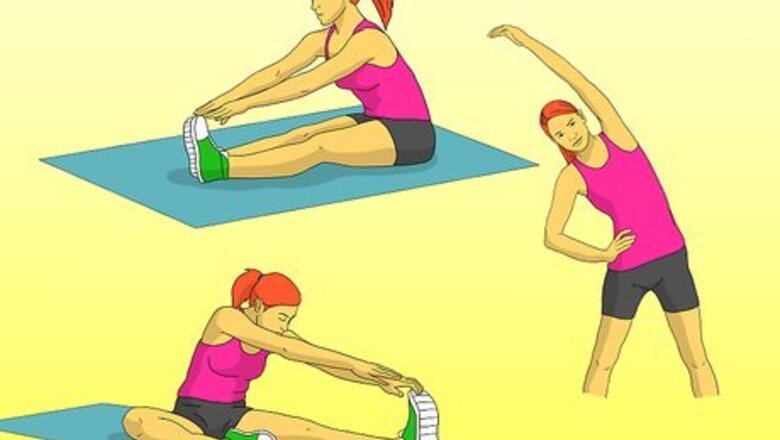
views
Increasing Your Strength and Flexibility
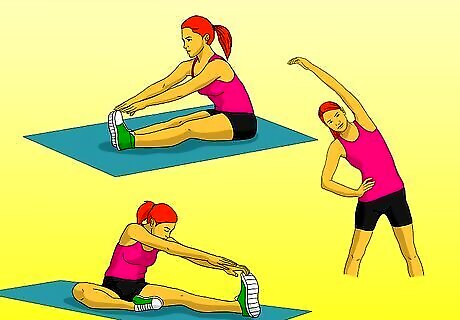
Practice stretches daily. Being able to touch your toes involves quite a few muscles. Enhancing your overall strength and flexibility with some targeted movements will help improve your toe touch and reduce your risk of injury.
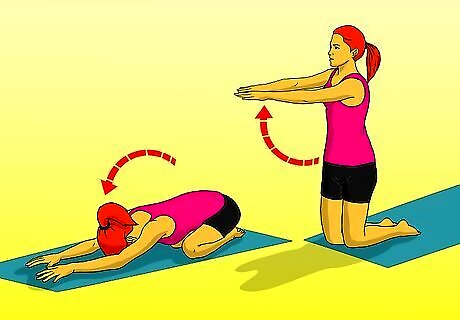
Stretch in child’s pose. Child’s pose helps stretch your low-back extensors, which will increase your forward range of motion. It can also increase freedom of movement in your pelvic area. Kneel on a yoga mat and reach your arms in front of you with palms facing down. Sit back on your heels and lower your arms and forehead to the floor (or a yoga block, if you need some extra support). Take five deep, slow breaths, then release the position. Stretch in child's pose once before doing the rest of the exercises in this part, and once after completing the exercises.
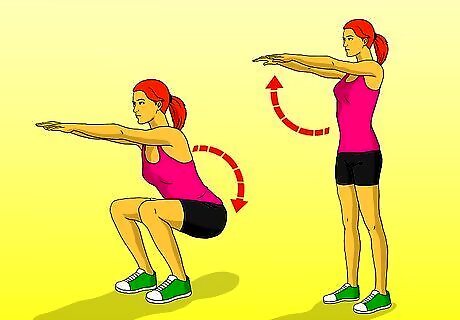
Do some squats. Squats are excellent for building strength and increasing flexibility. Proper form is essential when doing squats, but done correctly, they’ll help you with your toe touch. Do only 1-2 sets of three repetitions to start out; you can increase the number of sets as you grow stronger. Begin with your feet shoulder-width apart and your toes facing slightly outward (don’t force them). Your knees should be relaxed, not locked or hyperextended. Reach your arms in front of you at shoulder height. Look in front of you just above your hands. This should keep your head in a neutral position through the squat. You don’t want to look down or look up too far. Exhale as you move your hips backward. Pretend that you are sitting down on an imaginary chair. Make sure your heels don’t lift as you sit. Once you are as low as you can go without your back arching or heels lifting, hold the position for three long, slow breaths, then release. Repeat three times.
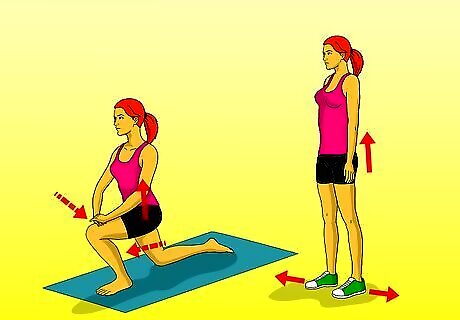
Stretch in a kneeling lunge. Kneeling lunges help release tight hip flexors, which will allow your hips to move more freely in a toe touch. They will also help loosen your hamstrings and quadriceps, which helps reduce the risk of injury. Start with a single short set of 4-5 reps and work up until you can do 2-3 sets of 10 lunges each. Begin by standing in a comfortable position with your knees relaxed and your arms hanging loosely to your sides. Step forward with one foot and lean forward, keeping your back neutral (don’t arch it or over-flatten it) and the other knee bent. As you enter the lunge, place your hands on your front thigh and lower your pelvis until your back knee is parallel to the ground. Keep your hips facing forward. Squeeze your buttocks and hold the lunge for a deep breath. Then return to standing.
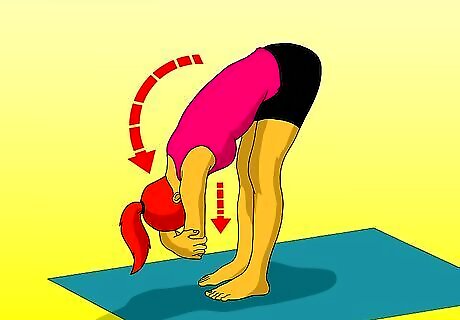
Perform a ragdoll pose stretch. The ragdoll will help loosen your hamstrings and increase range of motion, but it is less intense than a full forward fold so it’s great for beginners and those with limited flexibility. You don't need to repeat this stretch in sets; just make sure you stay loose and relaxed for ten full breaths. Begin by standing with your feet hip-distance apart and your knees relaxed. Don’t lock your knees during this stretch. Slowly exhale as you bend forward from the hips. Imagine that your head is very heavy as you sink toward the floor and let your body hang down over your legs. (This is why it’s called the ragdoll pose.) Clasp your hands around your elbows, as if you were forming a cradle. Don’t hold them too tightly, just enough to keep your arms off the floor. Ensure that your weight is balanced evenly. Your instinct may be to center your body weight in your heels, but you should be firmly connecting with the floor with your whole foot. Gently straighten your legs by using your quadriceps (the large muscles at the front of your thighs) to push your legs backward. Don’t lock your knees or force your legs to straighten past a comfortable point. Take ten long, slow breaths while hanging, then gently return to standing.
Warming Up for a Toe Touch
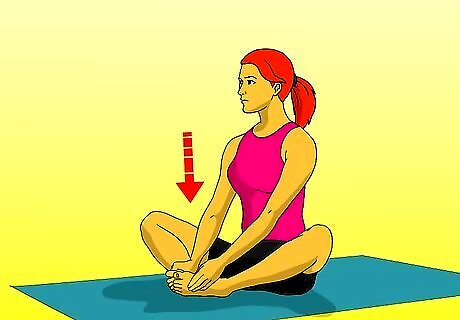
Sit in the butterfly stretch position. This position will stretch out your inner thighs.How to Do a Butterfly Stretch Begin by sitting on the floor with an upright, relaxed back. If possible sit up against a wall to keep your back supported. Your shoulders should be back, not rounded or hanging forward. Bend one leg at the knee and bring your foot toward your body. Repeat with the other leg. Don’t force your legs farther than they will go comfortably. The soles of your feet should be facing each other. Gently press your knees toward the floor and lean forward over your feet. You should feel some stretching in your groin and lower back, but stop if you feel discomfort. Hold the stretch for three long, slow breaths, then return to sitting.
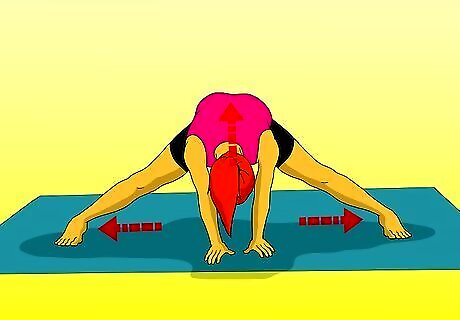
Return to a standing position and perform a standing straddle. Stand with your feet shoulder-width apart and your toes slightly facing outward. Your knees should be relaxed, not locked. Slowly slide your legs apart until you can't go down any lower. Do not stretch any further than your body naturally allows you. Hold this position for 30 seconds. (To help yourself stay balanced, lean over on your hands and use them to support part of your weight.)
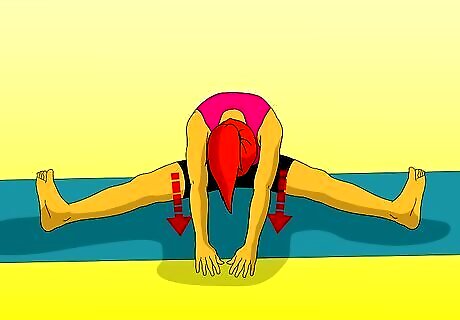
Sit back on the ground while maintaining the straddle position. From the standing straddle, slowly bend your knees and lower your hips to the ground. You can support yourself with your hands. Once sitting, stretch your arms in front of you and lean forward as far as you can. Your hands should touch the ground if possible. Hold this stretch for 30 seconds. You will feel the stretch in your lower back and your inner thighs, but you should stop if you feel pain. Return to the sitting straddle position.
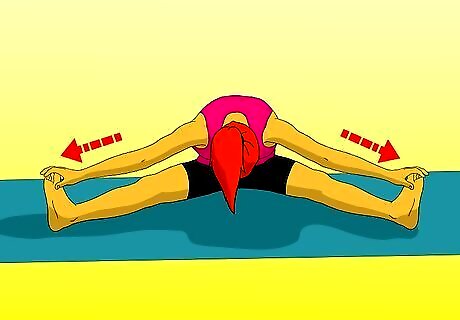
Reach your arms out to your sides. Lean forward and stretch your arms toward your toes. If you can reach your toes, hold onto them. Hold this stretch for 30 seconds.
Performing a Toe Touch
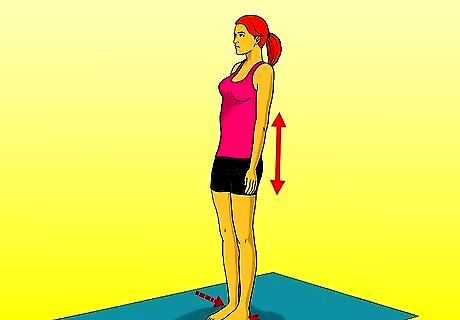
Stand with your feet together, heels and toes touching. Your back should be straight and your shoulders should be back, not slumped forward. Your legs should be straight, but your knees shouldn’t be hyperextended or locked. To keep your knees from hyper-extending, you can hold a rolled towel between your thighs while you do the toe touch. The gripping action should keep you from pushing your knees too far back.
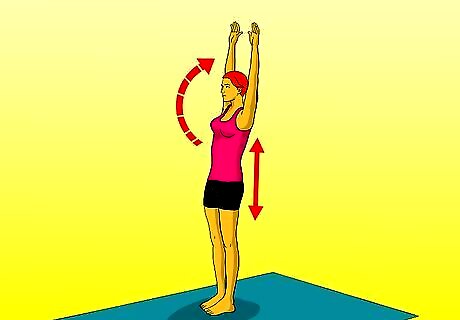
Stretch your arms up over your head. Your palms should face forward. Pull your abdominal muscles in, but keep taking slow, deep breaths.
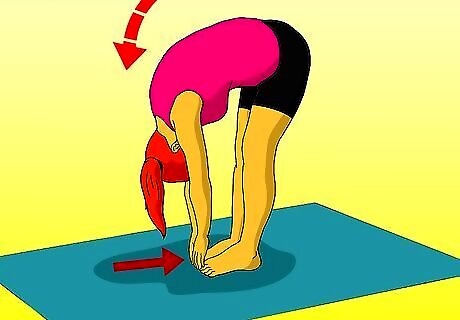
Bend forward from the waist. Allow your weight to roll your body forward toward the ground. Reach your hands toward your toes. You may find that you have to bend your legs slightly the first several times you do a toe touch. That’s okay. Each time you repeat your toe touch, try to bend your knees a little less. Don’t lock or hyper-extend your knees as you bend forward. While your legs should be straight, your knees should feel flexible.

















Comments
0 comment